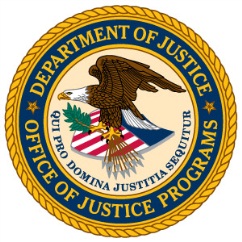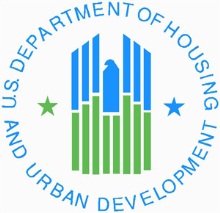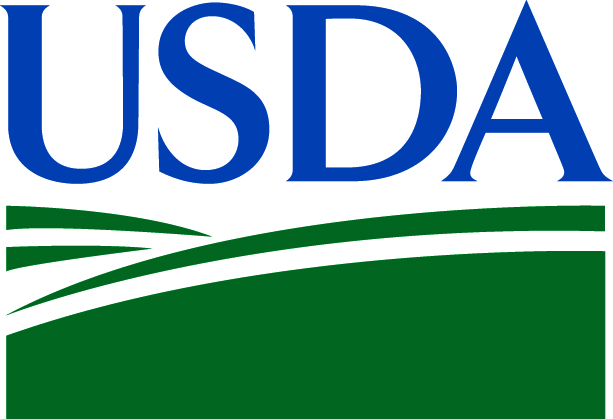Promise Zones
Promise Zones
PromiseZones_UrbanApplicationGuide_Final
Promise Zones
OMB: 2577-0279
OMB Control #: 2577-xxxx (expires
xx/xx/xxxx)







URBAN PROMISE ZONE 2013 APPLICATION GUIDE
2013
Urban Promise Zone Application Guide
The Promise Zones initiative will revitalize high-poverty communities across the country by attracting private investment, improving affordable housing, improving educational opportunities, creating jobs, reducing serious and violent crime, and assisting local leaders in navigating federal programs and cutting through red tape.
Applications must provide a clear description of how the Promise Zones designation would accelerate and strengthen efforts at comprehensive neighborhood revitalization. Applications must provide clearly labeled sections:
Required: A narrative of not more than 25 total pages that includes the most important information for purposes of Promise Zone selection. The narrative will be the main source for scoring; and
Optional: Additional documentation of not more than 25 pages included as attachments (where feasible, provide in summaries or pull most relevant text, charts, graphs instead of including large documents).
All lead organizations of designated Promise Zones, implementation partners in the Promise Zones strategies and any federal grantees whose federally funded work contributes to Promise Zone strategies will be required to participate in evaluations of Promise Zones and related federal grant activities that may be conducted from time to time. Lead organizations, implementation partners and federal grantees contributing to Promise Zones must agree to work with evaluators designated by federal agencies, including providing access to program personnel and all relevant programmatic and administrative data as specified by the evaluator(s) under the direction of a federal agency, during and after the term of the Promise Zone designation and/or grant agreement.
|
SUMMARY INFORMATION
LEAD APPLICANT
Due to the nature of the initiative, Promise Zone activities are likely to be carried out by a variety of organizations and organization types, including government entities, nonprofit organizations and for-profit organizations. Eligible lead applicants for Promise Zone designations include:
The application must clearly identify the lead applicant and provide the email and telephone contact information of the lead applicant. |
SUBMISSIONS, SECTION I
Required: Complete the Abstract form posted at www.hud.gov/promisezones. Within the Abstract form, provide an Executive Summary that describes how the Promise Zone designation would accelerate and strengthen existing efforts at comprehensive neighborhood revitalization. (Suggested one page limit for the Executive Summary)
|
|
QUALIFYING CRITERIA
All of the following must be present for a proposed Promise Zone for the application to be eligible for designation:
|
SUBMISSIONS, SECTION II Note: If your application does not meet all of these qualifying criteria, it will not be considered for designation as a Promise Zone. Required: City and Zone Maps. Provide a to-scale city map and neighborhood map that clearly labels the proposed Promise Zone in the context of existing city streets, the central business district, other key city and neighborhood sites, and census tracts. Applicants should submit a map that clearly labels the following information:
The optional Promise Zones mapping tool is located at http://www.huduser.org/PZ2013/promiseZone.html. The tool will allow applicants to draw a neighborhood-level boundary and will send an email that provides data on poverty level, highest census tract poverty level, population, as well as a neighborhood-level map. It will not show the boundaries of current federal place-based investments. See Section III for more information on the mapping tool data. If using, provide the data sheet produced from the mapping tool to demonstrate poverty levels and the population levels. Note: Maps and the data sheet will not count toward the 25 page narrative or additional materials page limits. Required: Local Leadership Support. Provide a letter that that demonstrates the commitment from local leadership, including the mayors of the jurisdictions represented in the Promise Zone. For applications across jurisdictional lines, a commitment must be demonstrated by leadership of all jurisdictions involved.1
Note: Letters of support will not count toward the 25 page narrative or additional materials page limits. |
SELECTION CRITERIA, 100 points total
Points |
Factors |
|
5 |
NEED
The applicant’s submission materials must contain sufficient information to verify the following data within the boundaries of the geographic area proposed as a Promise Zone, to the greatest level of specificity possible using available data sources. Points will be awarded for:
|
SUBMISSIONS, SECTION III Required: Narrative describing data points for the proposed Promise Zone geographic area. The mapping tool used in the Qualifying Criteria section will provide data points for poverty, employment and vacancy rates. It does not contain crime data. Crime data can be ascertained by the local law enforcement agency and should cover the years 2010-2012 (or 2009-2011 if 2012 is unavailable), and preferably break out the number of incidences for serious and violent crime. Secondary sources or locally published data can supplement the mapping tool. Additionally, include this data in the Abstract form. (Suggested 1 page limit)
|
40 |
Strategy The application must include information sufficient to demonstrate: |
SUBMISSIONS, SECTION IV
|
10
|
|
Required: Narrative summarizing needs and assets of the community. (Suggested limit of two pages) Optional: Attachments providing detail on community needs and assets referenced in the narrative.
|
20
|
|
Required: Narrative explaining the applicant’s overall approach to achieving the goals of creating jobs, increasing economic activity, improving educational opportunities, improving public safety, reducing poverty, and leveraging private capital. (Suggested limit of five pages) The narrative should make specific reference to those items listed under this criterion which are relevant to its situation and priorities, and note those items which it does not consider relevant. Applicants may also include items not listed under this criterion if they are relevant to the local strategy, with explanation. Optional: Logic models explaining the proposed strategy.
|
5
|
|
Required: Narrative summarizing the evidence base for strategy elements supporting each goal listed under this criterion. (Suggested limit of two pages) Optional: Copies or web links to studies, cases or other evidence reviewed in the selection of approaches to incorporate into the community’s strategy. Emphasize relevant excerpts/findings. |
5 |
|
Required: Narrative summarizing strategy to achieve a financially feasible and sustainable operation in each major component of the applicant’s strategy. (Suggested limit of two pages) The narrative should make specific reference to those items listed under this criterion which are relevant to its situation and priorities, and note those items which it does not consider relevant. Applicants may also include items not listed under this criterion if they are relevant to the local strategy, with explanation. |
55 Capacity AND LOCAL COMMITMENT |
|
||
10 |
|
SUBMISSIONS, SECTION V Required: Identification of lead applicant. Provide an organizational chart and accompanying narrative detailing your partnership structures, including the roles and responsibilities of each implementation partner organization and the accountability mechanisms. (Suggested three to four page limit) Optional: Attach existing MOUs, partnership agreements, other evidence of arrangements among parties. These materials are exempt from the 25 page additional documentation limit. Note: Upon designation, the Promise Zone lead organization will be required to execute MOUs between implementation partners no sooner than 60 days after selection as a Promise Zone. |
|
10 (a and b: 7.5; c: 2.5) |
|
Required: Narrative describing the lead organization’s capacity to achieve Promise Zone outcomes through implementation of sophisticated, multi-layered neighborhood revitalization efforts as described in the Selection Criteria. Provide examples of past relevant experience and results achieved, use of data to drive outcomes, and experience engaging residents. (Suggested limit of two pages)
|
|
10 (a: 7.5; b: 2.5) |
|
Required: Narrative describing implementation partner capacity to implement Promise Zone strategy as described in the Selection Criteria, including examples of past relevant experience and results achieved, use of data to drive outcomes, and experience engaging residents. Implementation partners are organizations that have a direct operational role in implementing strategy. (Suggested four page limit) Note: See “Definitions and Clarifying Information” section for a definition of Implementation Partners.
|
|
15 |
|
Required: Letter from local government executive that describes the commitment of local government to coordinate work and investments, including targeting of local and locally-controlled funds from other sources toward Promise Zone activities. (Suggested two page limit) Note: See Footnote 1 for approval delays. |
|
10 |
|
Required: Narrative that describes partnership commitments, including the extent of supporting partnerships with organizations that will not carry out day-to-day work of initiative, but will contribute resources or advise on the direction of the strategy regardless of the Promise Zone designation. (Suggested two page limit) Note: See “Definitions and Clarifying Information” section for a definition of Supporting Partners. Note: See Footnote 1 for approval delays. |
|
Note: Public reporting burden for this collection of information is estimated to average 48 hours. This includes the time for collecting, reviewing, and reporting the data. The information is being collected for OMB #2577-xxx and will be used for xxx. Response to this request for information is required in order to receive the benefits to be derived. This agency may not collect this information, and you are not required to complete this form unless it displays a currently valid OMB control number. No confidentiality is assured.
DEFINITIONS AND CLARIFYING INFORMATION
Lead applicant/lead organization: The lead applicant is the organization that will, if selected, act as lead organization for a designated Promise Zone. The lead organization will execute a Promise Zone designation agreement and be responsible to the federal agencies for fulfilling the responsibilities of the Promise Zone designation. These responsibilities will include organizing and/or coordinating activities pursuant to the strategy proposed in the designated community’s application, and administering any funding or other benefits that designation may confer in the future to designated Promise Zones. The lead organization will also be responsible for tracking outcomes, periodically reporting to the participating federal agencies, and participating in evaluation activities from time to time as requested by federal agencies. The lead organization will provide certifications to other organizations applying for grants and other benefits that, if received, would help to advance the Promise Zone strategy. Organizations receiving such certifications will provide them in the context of federal funding competitions and the conferring of benefits to designated Promise Zones.
To the extent that the lead organization is unable to directly perform any of these duties it will delegate them specifically to an implementation partner organization, and continue to oversee the fulfillment of all of the responsibilities under the Promise Zone designation agreement. The lead organization will be responsible for replacing the roles that implementation partners and other partners may play in the Promise Zone strategy in the event that one or more such partners are unable to fulfill their responsibilities as planned. Transferral of the lead organization to another organization than the lead applicant will require approval by federal agencies, pursuant to the terms of the Promise Zone designation agreement.
Implementation partner organization: An implementation partner organization is an organization that commits to fulfill specific responsibilities to carry out the day-to-day work and operations of the Promise Zone strategy, as detailed in the community’s Promise Zone application and any amendments, documents referenced in the Promise Zone designation agreement, and other documents that may exist among the partner organizations in the Promise Zone strategy.
Supporting partner organization: A supporting partner organization is an organization that will not carry out day-to-day work of initiative, but will contribute resources or advise on the direction of the strategy.
Examples of local government and other partner commitment: Commitments may be made to the Promise Zone strategy by many organizations acting in the community in ways that support Promise Zone strategy and goals. The level of intensity and duration of such commitments may range from occasional assistance and expressions of general support, to the ongoing roles and day-to-day responsibilities taken on by implementation partners, to the lead organization’s responsibility for overall coordination, reporting and delivery of results. Examples of commitments that would be less intensive and consistent than those of an implementation partner might include in-kind donations of the use of meeting space, equipment, telecommunications services, or staffing for particular functions; letters or other expressions of support for Promise Zone activities and applications for resources at the local, state and federal level; participation in steering committees or other advisory bodies with respect to the overall Promise Zone strategy or particular elements of it; permanent donations of funding, land, equipment, facilities or other resources; or the provision of other types of support without taking on a formal role in the day-to-day operations and advancement of the Promise Zone strategy as described in the definitions of implementation partner or lead organization.
1 To the extent that application components require resolutions, approvals or other actions by governing boards, legislative bodies, regulatory bodies or other entities with fixed schedules for consideration of such actions, and such actions cannot be taken prior to the application deadline, applicants must submit the following information by the application deadline: description of the action to be taken, date on which the action is expected, and information necessary to demonstrate its relevance to the proposal. Depending upon the importance of such actions to a selected applicant’s Promise Zone strategy, the agencies may make the Promise Zone designation contingent upon the receipt of evidence that the action has been taken.
| File Type | application/vnd.openxmlformats-officedocument.wordprocessingml.document |
| File Modified | 0000-00-00 |
| File Created | 0000-00-00 |
© 2025 OMB.report | Privacy Policy